Germany: The Heart of Europe and Innovation
Introduction:
Germany, officially known as the Federal Republic of Germany, is a country located in Central Europe. It is bordered by Denmark to the north, Poland and the Czech Republic to the east, Austria and Switzerland to the south, and France, Luxembourg, Belgium, and the Netherlands to the west. The capital city is Berlin, which is also the largest city and a major center for culture, politics, and science.
Germany’s geography is diverse, featuring forests, rivers, mountain ranges, and a coastline along the North Sea and the Baltic Sea. The climate is temperate, with moderate to heavy rainfall throughout the year, and variations due to latitude and altitude.
Economically, Germany is one of the world’s largest economies and the most significant in Europe. It is known for its industrial base, technological innovation, and strong manufacturing sector, particularly in automobiles, machinery, and chemicals. The country is a member of the European Union and uses the euro (EUR) as its currency.
Culturally, Germany has a rich heritage that has significantly influenced art, philosophy, music, literature, and science. German culture is characterized by its contributions to classical music, philosophy, literature, and its traditions in beer and cuisine. The country is known for its iconic landmarks such as the Brandenburg Gate, Neuschwanstein Castle, and the Berlin Wall. German is the official language, and the country has a secular approach to religion, with Christianity being the predominant faith.
Germany’s history is marked by its role as a central power in Europe, the influence of the Holy Roman Empire, and its pivotal role in both World Wars. The reunification of East and West Germany in 1990 was a significant event, leading to the modern unified nation.
Politically, Germany is a federal parliamentary republic. The President is the head of state, while the Chancellor is the head of government. Germany is an influential member of various international organizations, including the United Nations, NATO, the European Union, and the G7.
Tourism in Germany is a major industry, attracting millions of visitors each year to its historical landmarks, picturesque landscapes, and vibrant cities. Popular destinations include Berlin, Munich, the Black Forest, and the Rhine Valley. Germany’s cultural festivals, Christmas markets, and beer festivals also make it a top destination for travelers.

110 Facts About Germany (2024)
Basic Information
| Category | Details |
|---|---|
| 1. Current Name | Germany |
| 2. National Name | Bundesrepublik Deutschland (Federal Republic of Germany) |
| 3. Former Names | German Empire, Weimar Republic, Nazi Germany, West Germany, East Germany |
| 4. Date of Establishment | January 18, 1871 (unification) |
| 5. Date of Reunification | October 3, 1990 (East and West Germany) |
| 6. Leadership | President: Frank-Walter Steinmeier, Chancellor: Olaf Scholz |
| 7. Government Type | Federal parliamentary republic |
Geography
| Category | Details |
|---|---|
| 8. Capital City | Berlin |
| 9. Important Cities | Hamburg, Munich, Frankfurt, Cologne, Stuttgart |
| 10. Land Area | 357,022 square kilometers |
| 11. Total Area | 357,022 square kilometers |
| 12. Neighboring Countries (Land) | Denmark, Poland, Czech Republic, Austria, Switzerland, France, Luxembourg, Belgium, Netherlands |
| 13. Neighboring Countries (Sea) | None |
| 14. UNESCO World Heritage Sites | Aachen Cathedral, Würzburg Residence, Cologne Cathedral (51 sites) |
| 15. UNESCO World Natural Sites | Messel Pit Fossil Site |
| 16. Climate | Temperate with moderate to heavy rainfall |
| 17. Biodiversity | Diverse flora and fauna, including the European bison and lynx |
| 18. Famous River | Rhine River |
| 19. Famous Mountain | Zugspitze |
| 20. Coastline Length | 2,389 kilometers |
| 21. Major Islands | Rügen, Sylt |
| 22. Longest River | Rhine River |
| 23. Highest Waterfall | Röthbachfall |
| 24. Largest Lake | Lake Constance (shared with Austria and Switzerland) |
| 25. Largest Forest | Black Forest |
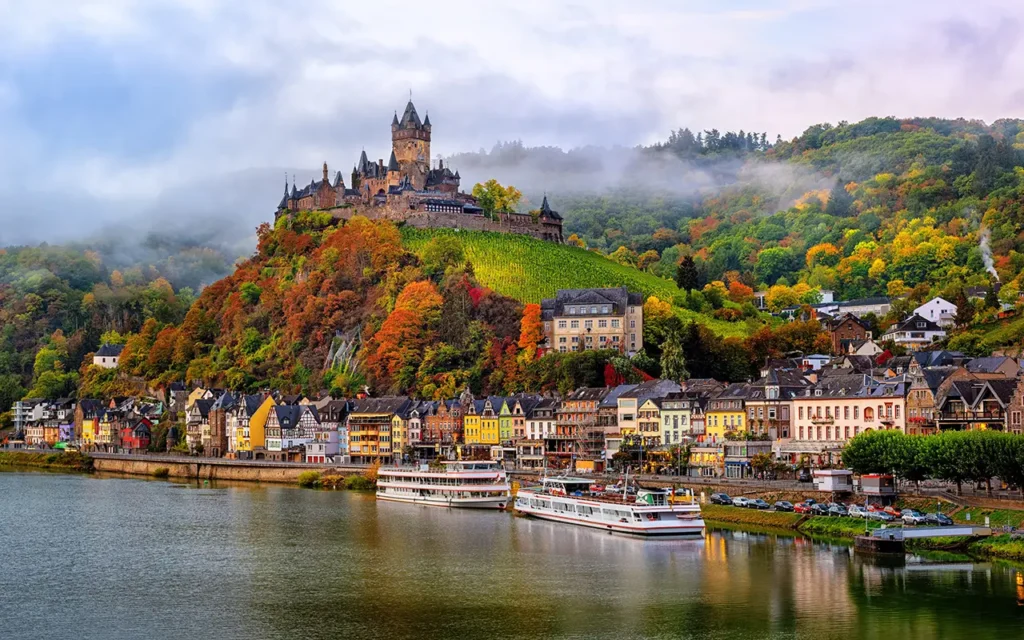
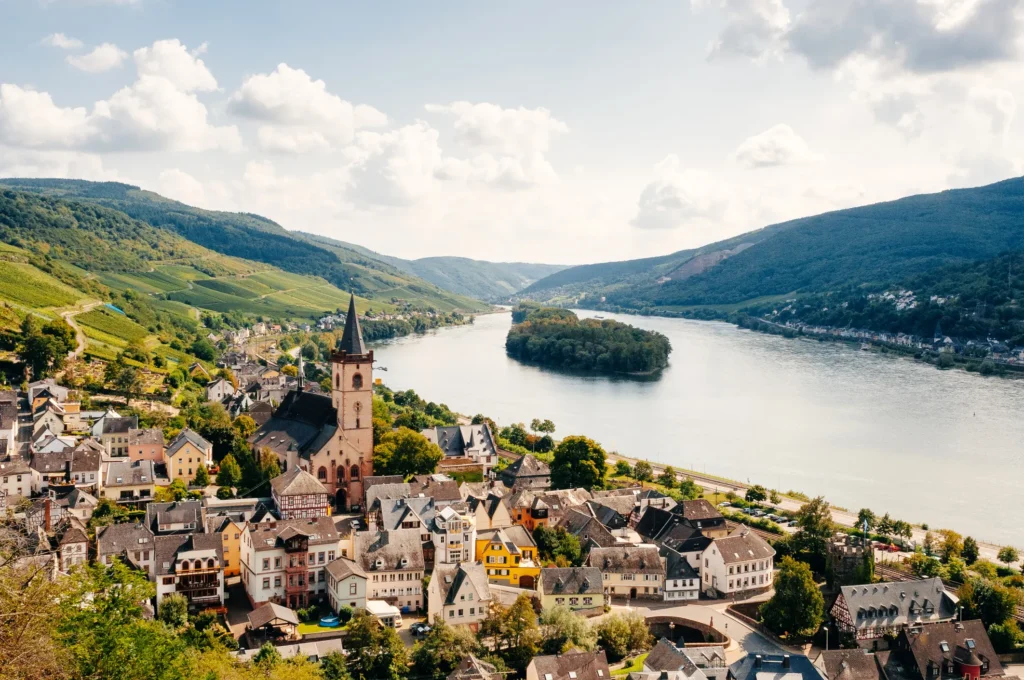
Population
| Category | Details |
|---|---|
| 26. Population (2024) | Approximately 83 million |
| 27. Population (1950) | 68 million |
| 28. Population (1900) | 56 million |
| 29. Projected Population (2070) | 80 million |
| 30. Population Density | 232 people per square kilometer |
| 31. Urban Population (%) | 77% |
| 32. Rural Population (%) | 23% |
Demographics
| Category | Details |
|---|---|
| 33. Ethnicity/Race | German (87.2%), Turkish, Polish, Italian, others |
| 34. Languages | German (official), regional languages (Sorbian, Frisian) |
| 35. National Language | German |
| 36. Religion | Christianity (predominantly Protestant and Catholic) |
| 37. Median Age | 45.7 years |
| 38. Life Expectancy | 81.2 years |
| 39. Birth Rate | 9.4 births per 1,000 people |
| 40. Death Rate | 11.5 deaths per 1,000 people |
Economic Indicators
| Category | Details |
|---|---|
| 41. Monetary Unit | Euro (EUR) |
| 42. GDP | $4.2 trillion (2022 est.) |
| 43. GDP per Capita (PPP) | $56,000 (2022 est.) |
| 44. Income Level | High income |
| 45. Consumer Price Inflation | 8.1% (2022 est.) |
| 46. Current Account Balance | $200 billion surplus (2022 est.) |
| 47. Exchange Rate (Per $) | 1 USD = 0.92 EUR |
| 48. Unemployment Rate | 5.2% (2022 est.) |
| 49. Stocks Inward ($ billion) | 1,200 (2022 est.) |
| 50. Real GDP Growth (%) | 2.6% (2022 est.) |
| 51. Labor Force (Million) | 45 million |
| 52. Major Industries | Automotive, machinery, chemicals, pharmaceuticals, electronics |
| 53. Major Exports | Vehicles, machinery, chemicals, electronics, pharmaceuticals |
| 54. Major Imports | Machinery, vehicles, oil, chemicals, electronics |
| 55. Public Debt (% of GDP) | 68.7% (2022 est.) |
| 56. Tax Revenue (% of GDP) | 39.3% (2022 est.) |
| 57. Minimum Wage | €9.60 per hour |
| 58. Average Household Income | $41,000 per year |
| 59. Inflation Rate | 8.1% (2022) |
| 60. Interest Rate | 0.0% (2022) |
| 61. Major Trade Partners | China, United States, Netherlands, France, Italy |
Social Indicators
| Category | Details |
|---|---|
| 62. Literacy Rate | 99% |
| 63. Fertility Rate | 1.53 children per woman |
| 64. Infant Mortality Rate | 3.3 per 1,000 live births |
| 65. Under-5 Mortality Rate | 4.0 per 1,000 live births |
| 66. National Holidays | German Unity Day, Christmas, Easter |
| 67. Health Care System | Universal healthcare system |
| 68. Health Expenditure (% of GDP) | 11.7% (2022 est.) |
| 69. Obesity Rate | 23.6% of adults |
| 70. Drinking Water Source | 100% of the population has access to clean drinking water |


|
| 71. Access to Sanitation | 100% of the population has access to improved sanitation facilities |
| 72. Average Life Satisfaction | 7.1/10 |
| 73. Major Health Issues | Cardiovascular diseases, cancer, diabetes |
| 74. Smoking Rate | 25.4% of adults |
Culture and Society
| Category | Details |
|---|---|
| 75. Famous People | Albert Einstein, Ludwig van Beethoven, Johann Wolfgang von Goethe, Angela Merkel |
| 76. Legal Marriage Age | 18 years |
| 77. Gender Inequality Index | 0.084 (2021) |
| 78. National Sport | Soccer |
| 79. Sport Achievements | Multiple FIFA World Cup wins, Olympic medals |
| 80. National Animal | Federal Eagle |
| 81. National Fruit | Apple |
| 82. Famous Landmarks | Brandenburg Gate, Neuschwanstein Castle, Berlin Wall |
| 83. National Dish | Sauerbraten |
| 84. Major Newspapers | Frankfurter Allgemeine Zeitung, Süddeutsche Zeitung, Die Welt |
| 85. Major TV Channels | ARD, ZDF, RTL |
| 86. Popular Music Genres | Classical, pop, rock |
| 87. National Theatre | Deutsches Theater, Berlin |
| 88. National Gallery | Alte Nationalgalerie, Berlin |
| 89. Popular Festivals | Oktoberfest, Berlin Film Festival, Carnival |
| 90. Average Internet Speed | 55 Mbps |
| 91. Most Popular TV Show | “Tatort” |
| 92. Most Popular Book | “Faust” by Johann Wolfgang von Goethe |
| 93. Most Popular Sport | Soccer |
| 94. Most Visited Museum | Museum Island, Berlin |
| 95. Largest Stadium | Olympiastadion, Berlin |
| 96. National Anthem | “Deutschlandlied” |
| 97. Famous Historical Sites | Heidelberg Castle, Wartburg Castle, Reichstag Building |
| 98. Major Brands | BMW, Mercedes-Benz, Siemens, Adidas |
| 99. Famous Foods | Bratwurst, pretzel, schnitzel |
| 100. Famous Drinks | Beer, Riesling wine, Apfelschorle |
Education
| Category | Details |
|---|---|
| 101. Best Public University | Ludwig Maximilian University of Munich |
| 102. Best Private University | WHU – Otto Beisheim School of Management |
| 103. Education Rank | 20th globally |
| 104. School Enrollment Rate | 98% for primary education |
| 105. Average Class Size | 20 students |
| 106. Notable Alumni | Angela Merkel, Albert Einstein, Karl Marx |
| 107. Public Spending on Education | 4.8% of GDP |
| 108. Number of Universities | Over 400 |
| 109. Popular Study Abroad Destinations | United Kingdom, United States, Netherlands |
| 110. Literacy Programs | Extensive adult literacy programs available |
History
Germany’s history is marked by its role as a central power in Europe, the influence of the Holy Roman Empire, and its pivotal role in both World Wars. The reunification of East and West Germany in 1990 was a significant event, leading to the modern unified nation.
The Flag of Germany
The national flag of Germany features three horizontal bands of black, red, and gold.
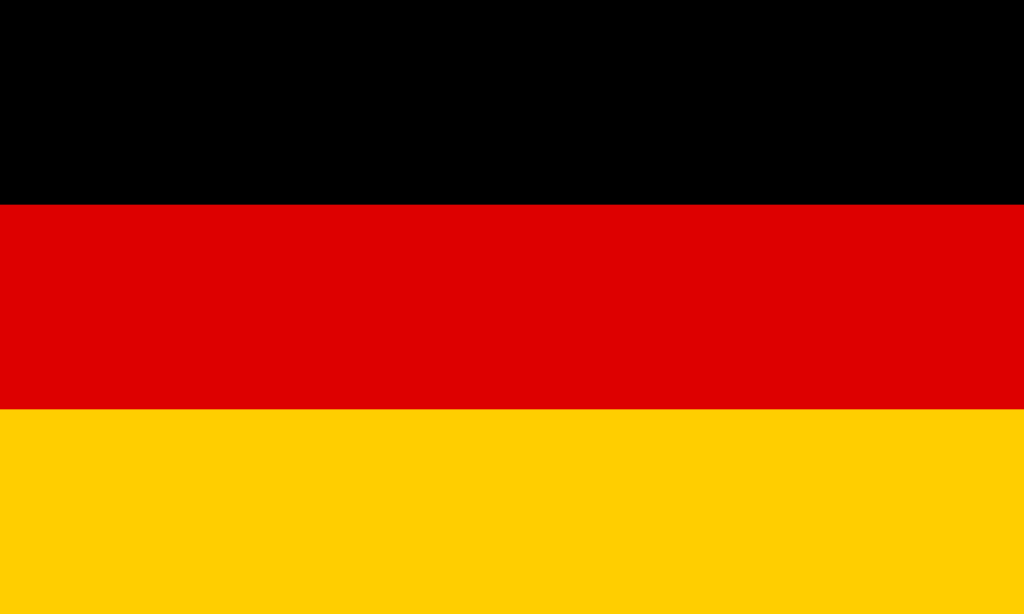
- Black: Represents determination.
- Red: Symbolizes bravery and strength.
- Gold: Represents generosity.
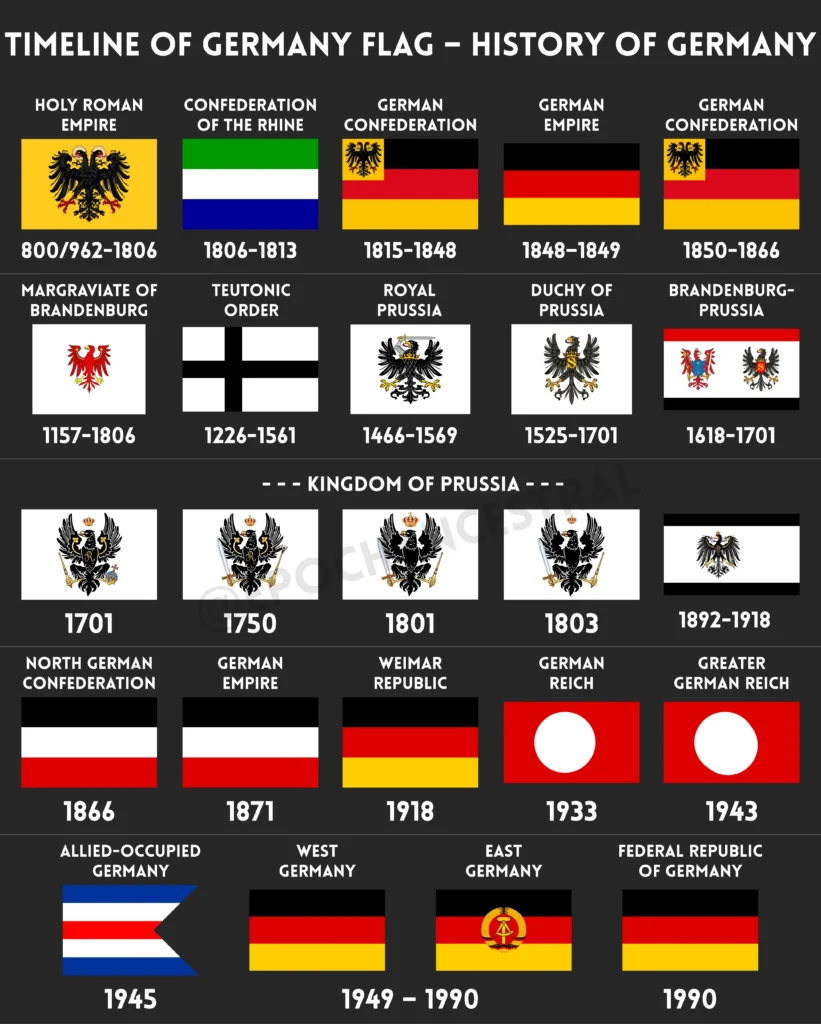
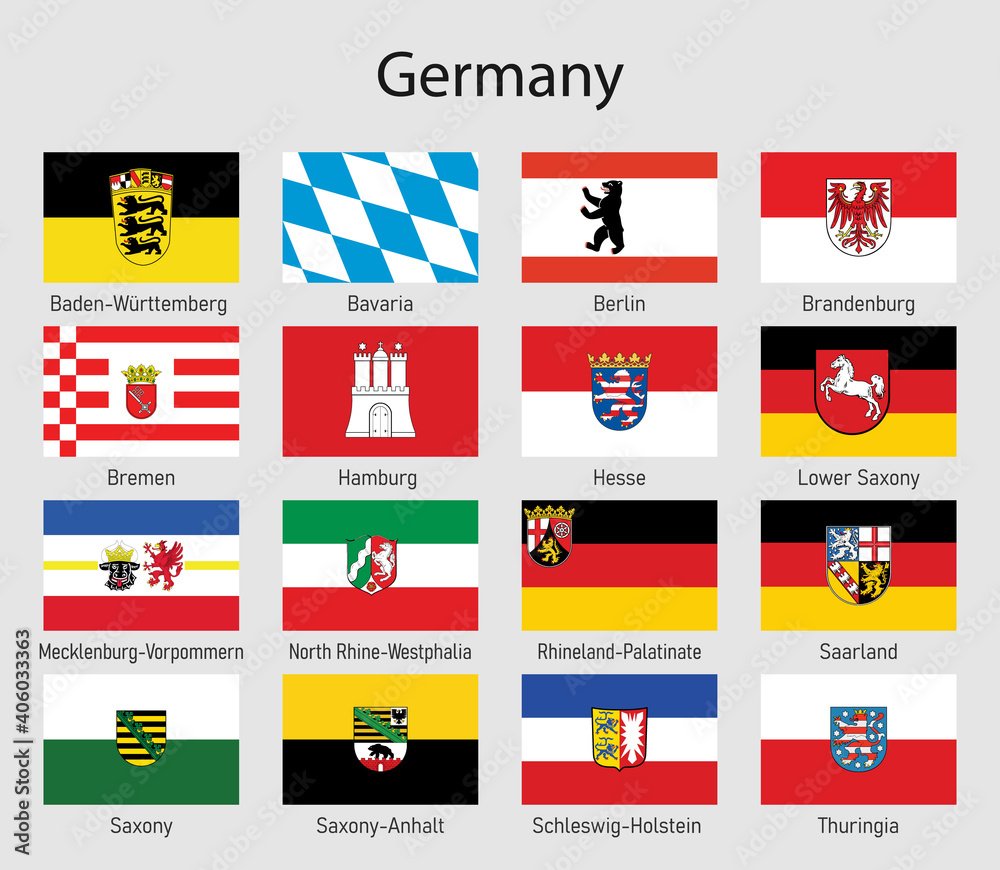
The flag symbolizes Germany’s commitment to unity, freedom, and democracy, reflecting the nation’s pride and values.


